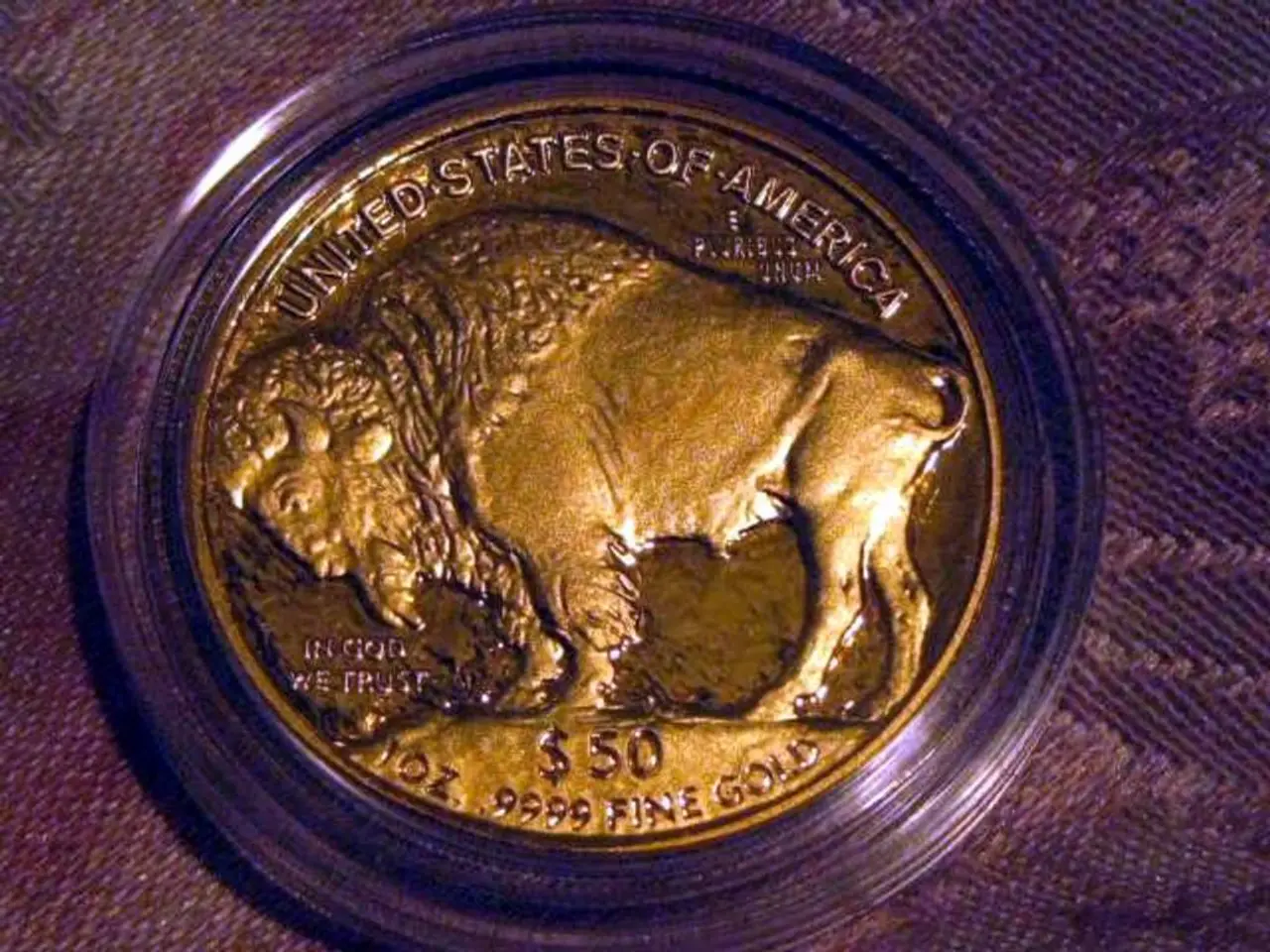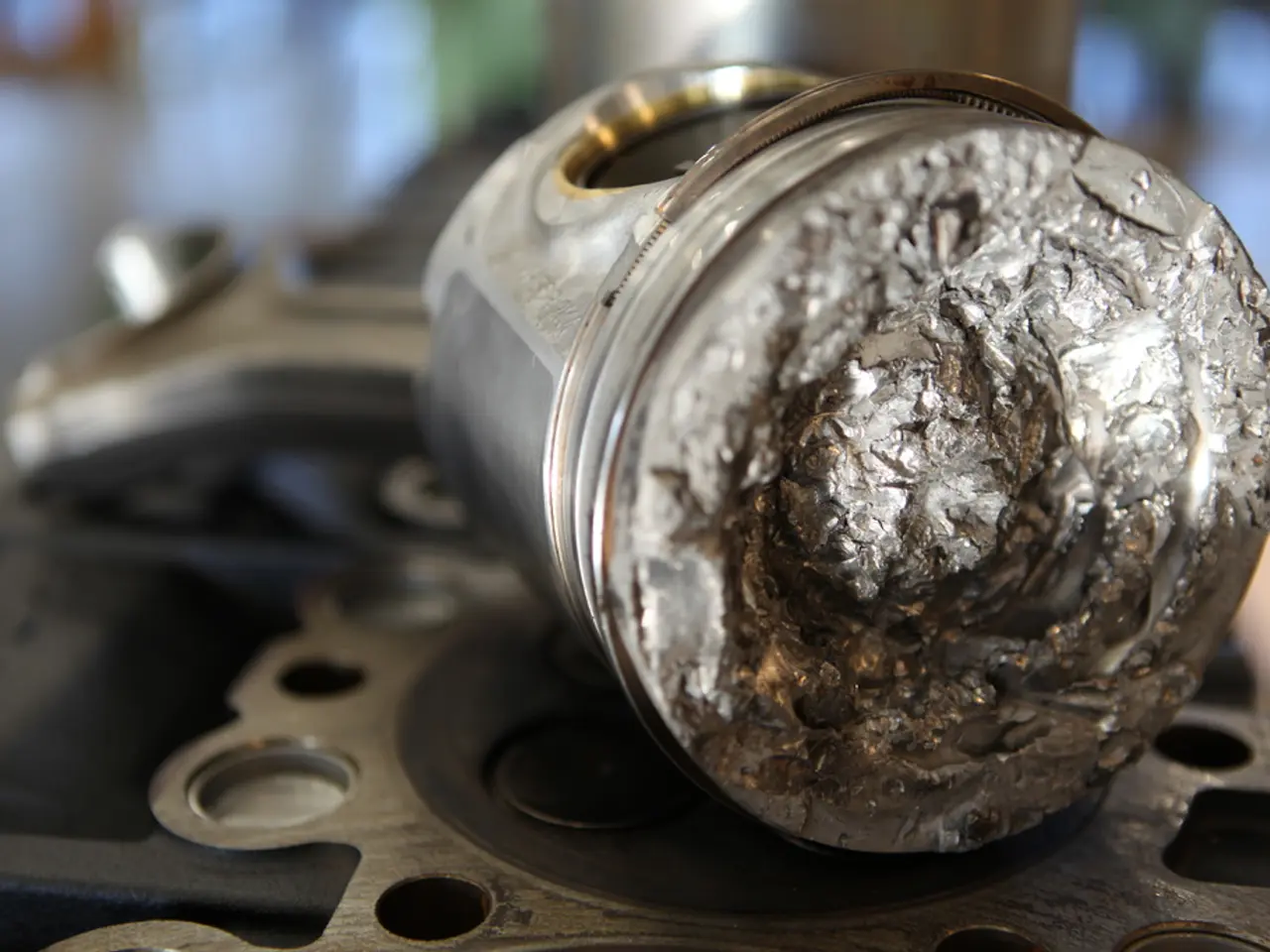Tensions between Israel and Iran push gold prices towards a two-month peak.
In a thrilling turn of events, gold prices spiked by over 1% on Friday, brushing up against a two-month high, all thanks to a concoction of geopolitical tension and trade uncertainties. This bullion bonanza sees gold hovering at $3,423.28 an ounce in European trade and $3,444.50 an ounce in the US, with gains of more than 3% for the week.
The Middle East is ablaze with tension, as Israel, in a bold move, launched strikes against Iran early Friday morning. Targeting nuclear facilities and ballistic missile factories, Israel aimed to cause significant damage to Iran's nuclear infrastructure, missile factories, and military capabilities. In retaliation, Iran unleashed over 100 drones towards Israeli territory.
Six nuclear scientists were reportedly killed in the strikes, and key personnel linked to Iran's missile development programs were targeted. The Natanz facility, a cornerstone of Iran's nuclear infrastructure, sustained damage, but there was no indication of a radioactive leak. Fortunately, the International Atomic Energy Agency (IAEA) has confirmed that there hasn't been any rise in radiation levels at the site.
As countries grapple with these escalating tensions, the future of the U.S.-China trade deal remains unclear. The details of the latest U.S-China framework agreement and its implementation are still hazy, with significant disagreements and undecided details yet to be ironed out.
The International Monetary Fund (IMF) has sounded the alarm, suggesting that the brief global trade rebound, fueled by firms rushing to beat U.S. tariffs, is now slowing, casting a shadow of uncertainty over the global economic outlook.
Traders should also keep an eye on preliminary readings on U.S. consumer sentiment and inflation expectations, which could potentially impact trading later in the day.
On a broader note, the U.S.-China trade deal, as of June 2025, involves a recent framework agreement reached after high-level negotiations in London on June 10, 2025. This agreement is pending final approval from Presidents Trump and Xi. It aims to stabilize trade relations and builds upon a consensus from Geneva in May 2025. Key elements include a tiered tariff structure on Chinese imports:
- A 10% baseline reciprocal tariff on all Chinese goods under the International Emergency Economic Powers Act (IEEPA), effective April 5, 2025.
- An additional 20% tariff on certain goods linked to China's shipments of fentanyl precursors, implemented in February 2025.
- A 25% tariff on specific goods under Section 301, targeting unfair trade practices such as intellectual property theft.
These tariffs stack in certain cases, resulting in rates as high as 35% on some products like electronics. The deal also includes negotiations on China’s rare earth export controls and U.S. demands for guaranteed semiconductor supply access to counter Chinese leverage[2].
Intriguingly, while gold is typically a safe-haven asset during global turmoil, wars and conflicts are not the primary drivers of higher gold prices. Instead, analysts at Bank of America suggest that the U.S. budget deficit and fiscal outlook will be more critical in shaping gold’s trajectory[5]. The ongoing U.S. tax-and-spending bill, which is expected to add trillions of dollars to deficits, may lead to increased market volatility and attract more demand for gold. They forecast gold prices to potentially rise to $4,000 per ounce within the next year, driven primarily by fiscal concerns rather than geopolitical conflict alone[5]. Keep your eyes peeled for more developments!
- The escalating war-and-conflicts in the Middle East, particularly the recent moves by Israel and Iran, have stirred uncertainties in global politics and finance.
- Despite gold being a traditional safe-haven asset during global turmoil, the ongoing geopolitical tensions are not the primary factors influencing its prices, according to analysts at Bank of America. Instead, the U.S. budget deficit and fiscal outlook are expected to play a more critical role in shaping gold's trajectory.




